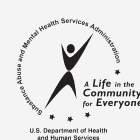
Youth Violence Can Be Reduced By Increasing Alcohol Controls, Studies Suggest
|
Make access to alcohol more difficult and young adults are likely to commit fewer violent crimes. That’s what two studies by University of California at Riverside researchers showed recently, according to an article published by CBS Los Angeles. The first study, which examined 91 of the largest American cities in 36 states, found a link between alcohol store density and violent crime among teens and young adults aged 13-24. In the second study, researchers found higher rates of violent crimes in neighborhoods near alcohol outlets with more than 10 percent of freezer space for single-serve containers. The researchers described the effect as “modest,” yet crime did increase in areas with a higher percentage of single serve alcohol containers.








